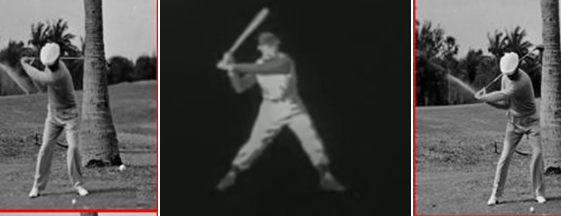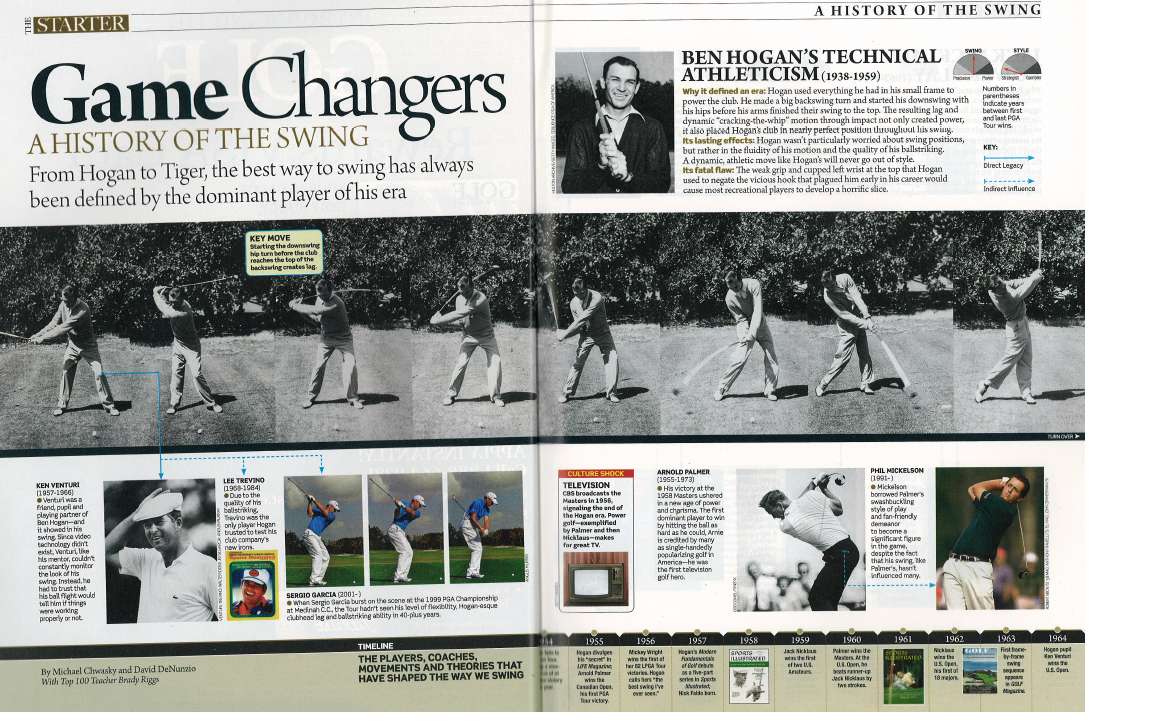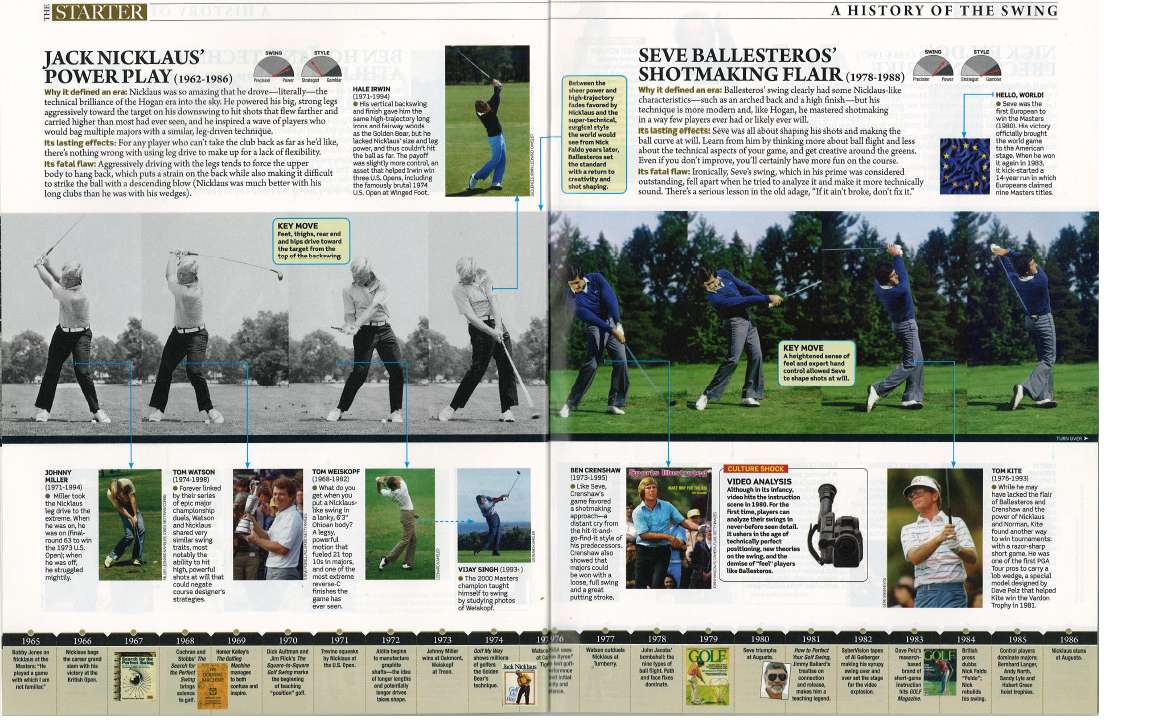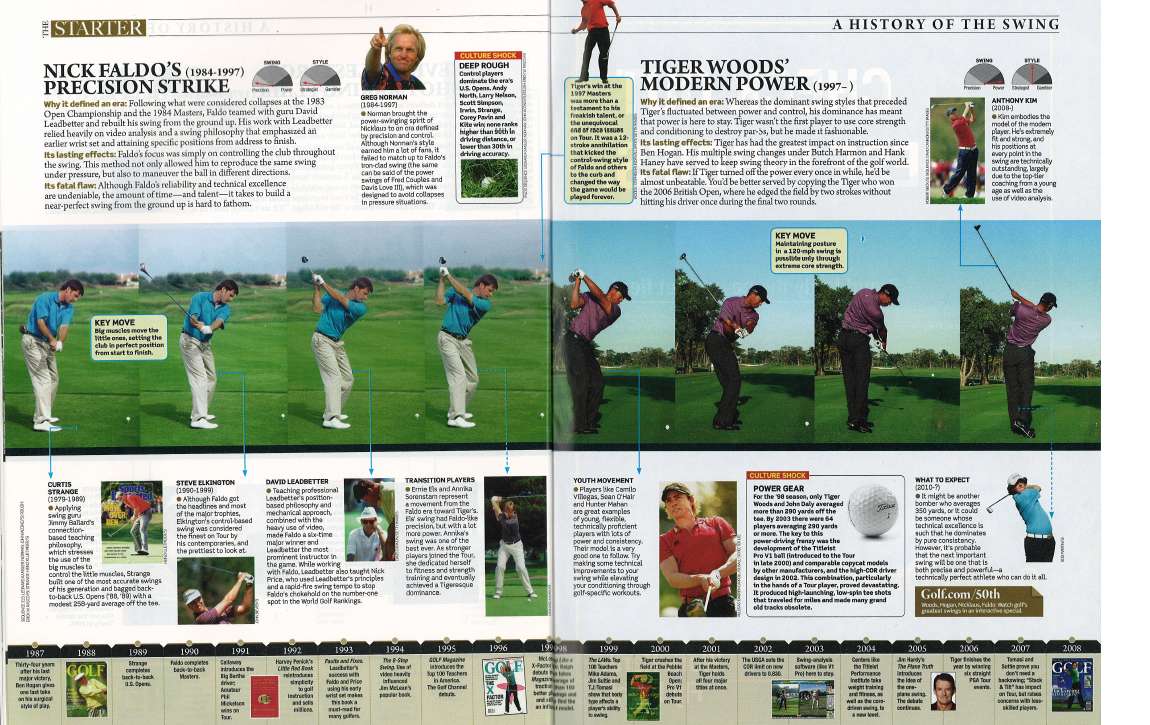Update to above Home Run Derby shows: You’ll actually have to view an episode. Between innings the score will be shown. Look at the image/logo on top of the scoreboard and compare to picture #8. I know its in the episode of Duke Snider v. Henry Aaron.
Here’s a link to the YouTube Home Run Derby vid of Henry Aaron and Duke Snider. The logo RR talks about comes up in about 6 seconds:
Thanks 1teebox for finding that video. And thanks for reminding me about how many blocks I’ve been around- I’ve seen all those guys play. ![]() Still ticked the Detroit Tigers traded “The Rock”.
Still ticked the Detroit Tigers traded “The Rock”.
Hank Aaron always one of my favorites… My thinking is he was underpaid and underappreciated.
I can remember seeing him years ago on TV , describing his hitting. He said something like this( form my memory):
He used his hands and wrist to achieve his power, and he did not try to swing the bat “up”…rather he swung it level, or even slightly down to hit those deep line drives.
BOM
This is a fascinating insight to me. I could have looked at these pictures for a week and not seen it…do others agree with it? How do you think Tiger could fix it, and how can we avoid the error…would widening the stance do the trick?
Probably spend less time trying to pick up waitresses at the Waffle House and look at some pics like we do! ![]() Dumping Hank Haney probably wouldn’t hurt either.
Dumping Hank Haney probably wouldn’t hurt either.
Captain Chaos
I agree, only after BOM’s analysis do I notice that Hogan, after his shift to the left, seems to rotate around the centre of his pelvis, and so his left side seems to rotate back around through impact - so it looks like he’s hanging back a little. Through P3/P4 this would surely be geometrically more correct.
I remember seeing an old youtube video of Tiger on some Golf channel with Butch Harmons where they were discussing his swing changes of that time. He was saying that his new swing felt like he was throwing the club at the ball with his arms more - in the past his arms were way behind him and he’d have to “save” the shot. I’m wondering whether his earlier swing of saving the shot was the better, more pivot-controlled swing?
RR,
Here it is between frames 8 & 9

Let me know which you prefer (8 or 9) and i will put it on Small World.
NRG
NRG: Pretty cool technology. How do you guys do that. I need to take some computer classes I guess. All I know is how to do these email posts. Anyway…not sure what Small World is but I guess if you feel it would be appropriate by all means do so. On your post, the picture on the right of Hogan and the middle picture of logo is what I was trying to demonstrate. Both bat and club form nearly 45 degree angles to horizon. Find that and you are on auto-pilot- go at it as hard as you wish. Thanks again RR
RR
45 degrees to the horizon is exactly at 04:30.
Which horizon? Isn’t RR saying, looking at the horizon behind Mr. Hogan, the left arm is parallel to the ground, and therefore the horizon, and the shaft is 45 degrees from that line? Maybe I’m missing something…
Cheese Donkey: Love that tag name/picture. You are spot on. The shaft is 45 degrees to the horizon. If you were to find a face on view of Nicklaus or Woods, for example, their shafts would also appear 45 degrees to the horizon at the same point we see Mr. Hogan in picture #8 by the palm tree. The key difference is what happened way before that. Hogan MOVED the clubhead further away from the target line within the first inch of his downswing. Tiger doesn’t really come close to doing that hence that’s why he gets stuck. Kind of difficult to explain. Not sure about the 4:30 thing- I don’t see motion in terms of clock positions. ![]()
I’ll give you a bit of my take on the legs but I tend not to have short versions of descriptions because nothing really exists in isolation so I tend to get drawn away to the relevant links. As far as you not falling into this problem, I’m sure Lag won’t let you guys leak into any sliding positions- he knows what he’s doing. A wider stance does help as it contains the hip and pelvic area more solidly, but you still have to move the right way. The idea of getting your weight onto your left side on the downswing is a little inaccurate in my opinion, or at least an oversimplification. Another thing I don’t really agree with is that all of your weight should be on your left leg on your follow through- I think both legs should be very much alive in supporting your followthrough since I think they’re both used to power the swing. The weight does go through the left leg, it doesn’t stop there if you’re accelerating correctly. Because the whole thing is rotational, it does go back around the other side and in reality, back onto the right leg… it takes a bit of a brain stretch to see that…
To the same degree that you want to load the arms, hands and club on the way down, you also want to be loading the body, and a lot of the thrust does come up through the right leg, so that does have to be loaded.
A good little test to do is get close to a golf posture facing the edge of a wall/doorframe/bookcase(with the edge/side in line with where your club would be at set up) then open out your right hand to meet the side as if it were the back of the club. Now try to push the wall in the direction that would be your target. It’s quickly obvious which foot your pushing power is rooted in, and what part of the foot too. Try to sit on your left one and you don’t have a lot of momentum or force. It’s an interesting test with a few things to learn from it… But it shows the importance of loading into your right leg correctly into the downswing and holding it in place to deliver the club through with your maximum potential at the right time.
I would say that Hogan was the best at this, but there have been a few. Sergio is great at it too. There’s an interesting sort of chicken and egg thing that goes on with loading the right leg and loading the wrists/late hit. When you slide, you have to cast out the clubhead because if you don’t then you’ll swing over the top of the ball. Conversely, if you get super loaded into the right leg with a deep club, you really have to delay the hit correctly in order to make contact with the ball and not the ground before it(those are two very simplified descriptions of extremes but it’s good to learn from what happens in the extreme versions of things). It’s interesting that Teddy mentioned that Hogan sort of looked like he was in a hang back position, and Sergio looks the exact same way- it’s part of good use of the right leg imo. That caddy eye view can be a confusing angle to view the swing from because the angled plane, or the swing’s depth is eliminated from your perception. This is particularly relevant when observing the ‘hands ahead at impact’ concept. From the caddy angle it looks like they are simply ahead of the ball and if you were to try to recreate that position in your swing you’d soon find out how bad bad golf can be! Viewing that same position from behind or in front you see that ‘cutting it left’ move that is the yin to the yang of the ‘hands ahead’ idea.
When you lead the club into the ball it’s not laterally since the golf swing is rotational with considerable depth to it on both sides of the ball. You lead the club, you stay ahead of it internally- it’s a circular race, which is what cutting it left is, and what pivot thrust is, and accelerating both hands. They’re aspects of internal to external rotational acceleration. And ironically the faster you rotate something the harder things will get thrown away from the centre(or continue on their journey depending on which side of the CF debate you’re on!) In golf, this adds up to the harder you rotate and unwind away from the target, the harder and faster the club moves TOWARDS it! Which is another reason that slide is such a bad move- you actually lose power by accelerating towards the target…Is it any wonder this game is so hard… and in that regard, this is also why it’s so important to wait for the arms and club to come down before you activate your rotation- if you haven’t linked them up to the motor when you put the foot down it’s gonna be messy to say the least
Having said that, the changing of the rotational centers is key, and is a lateral move, but it’s subtle. LCDV talked about that regarding that final power loading with the axis shift…
I’m going off on tangents. Nothing exists in isolation- do you know how hard scientists work in labs to create sterile environments in order to isolate things- it’s almost impossible to do. What chance have we got to do it in a golf swing? Not much…
The whole idea of the lateral move is interesting because although the centre of rotation does move from the right leg to the left, any attempt to laterally shift the weight ends up making you slide your hips too far out like Tiger- this is because the centre of your mass is right below your bellybutton so in trying to ‘shift the weight to the left’ that tends to move. This is probably a lesser evil than spinning the top half and shoulders around the right foot, because the club will at least have some degree of forward motion, but neither are all that great to be honest. As my man Jackie Burke says, ‘you don’t shift weight, you turn it’… don’t take my word for it, he knows what it’s all about!
Even Trevino talking about his lateral shift is a little misleading. He had a lateral knee flex but his two legs stayed very active and strong in the motion and his center was always contained on the inside of the rotation. Players like Hogan and Trevino had a little recoil/fall back move after they swung- their right legs were still very much involved- I’m not saying it doesn’t leave the ground or the weight doesn’t come off it, but it doesn’t just all of a sudden start flopping around and going asleep- like I was saying above, the momentum keeps going around and needs to be supported back there…
An old piece of advice that’s gotten kind of lost is the picture of the left knee working a little circle around the foot and then back behind. It’s good because it encourages the shift of centers without the hip slide and discourages an early locking of the left leg spin out ott move. It’s similar to how Trevino bought his arms and club some time to get into the slot…
I’ve gone on here, though at the same time I feel like I’m over simplifying everything- like all thoughts, these are works in progress… hopefully I got to a little bit of what were talking about here!
Bom
thats a very insightful post. I used to watch Lag swing very intently and the one thing that stands out in his swing is the big sit down on the right heel in his transition. I have tried it. It is actually the hardest form of a sit down and involves lowering your bum rather than just a knee flex. I am trying it but at sit down my weight is still marginally on the left toes.
In case your weight sits on the left side you have to bump at backwards on to the inside right heel before you can fire. An amount of slide to the left happens against all my effort and will need more strengthening of those big hip flexors.
I find the Fred Austair movie very helpful in that he taps the weight back and forth before he fires. The right heel slide achives the same goal in that the right leg follows the weight even when its running away from it.
BOM: Liked how you focused in on the right foot and it’s pressurized importance and even more importantly how a face on view of the inclined plane hides the depth of the plane. Cool stuff ![]() RR
RR
From a recent Golf Mag article on the history of the swing…sort of interesting…



Macs,
Yeah that is a tough move that requires strength and flexibility. I don’t know if you’ve ever tried tai chi but that puts seemingly innocuous demands on your body until you try it. I haven’t done a whole lot of it myself, just enough to know that those old timers make it look a hell of a lot easier than it is. That sit down move is similar to some of their movements. There’s a martial arts pose called Horse Stance that might help you get a little more action in that area-it’s helped me a lot.
You mentioned feeling some weight on the front of your left foot during that move, and to be honest, I don’t see that as so bad. I actually like that move, it buys you some time on the unwind and still feels quite strong. One of the difficulties with that hold or wait is that it’s a period of inactivity that isn’t all that nice a feeling to have in the short period of time that the golf swing is. I kind of like a sit into the front of both feet during the squat(the right foot would require a little more explanation but simply put the explosive part of each foot is at the front- you don’t jump off your heels). Ultimately the left heel is a sort of pivot point or point of leverage to pull away from. The idea of weight being on it is missing the point, it’s a leverage point for the unwinding acceleration which is why that lowering is a power move, you’re creating a sort of ‘jumping leverage’. The weight that goes into it is really just the amount of acceleration that’s going away from it, kind of like the right foot idea. Getting into the left heel too early is a similar power leak to getting off the right foot too soon. Actually, now that I think of it, they go hand in hand! Cool, I like discoveries.
If you look at the journey of the pressures through the feet it’s kind interesting. From pretty even at set up, the backswing takes it, in simple terms, into the back of the right foot and into the front of the left foot, and by the end of the swing it’s the opposite. If the transition is a sort of wait time then the weight/pressure should not just wait in the right foot but should also wait in the front of the left foot- kind of like what you’re feeling, then it goes into the heel in tandem with the activation of your torso rotation and acceleration. The other cool thing to observe about the journey of the weight through the feet is that it’s circular just like the swing- which just makes sense. The circular nature of that journey makes me like that feeling of having some pressure in the front of the left foot for just a little bit during that hold/loading time…
Have you read Trolio’s book and how does it fit ? He says something like Hogan “got his weight onto the left foot” by the end of the backswing." I am wondering if what really happend was the axis through his spine went to his sacrum to his left foot/heel…but there was enough tilt to the right so that the weight was not really over it…so as you say, he could still hit off the right foot( if I am interpreting you correctly).
And RR…the question tome is what CAUSES Hogan’s club to move away from the target line first move down?? Any ideas anybody?
I haven’t read Trolios book I’ve just seen some of his youtube vids after being told about him. To be honest, claiming to know the secret of a dead guy kind of rubs me up the wrong way when you’re making money off it…
Hogan’s swing is very difficult to analyze for many reasons I think- he was super flexible particularly in his wrists and hands, he had freakishly strong legs, and he spent a large part of his career hooking the crap out of it(there’s some intangible in his swing that made him hook it- you can speculate what that was physically, but it’s still speculation) etc etc etc, the list goes on. I’ve argued before, and I would still stand by it, that the real side of the course that Hogan eliminated was the right side- he just didn’t care about it. If it went right I don’t think it bothered him, it was the hook that he feared. So in wanting to eliminate the left side he had the comfort of not worrying about the right. To me, that’s eliminating the right side. Obviously this is speculation, but it’s what I think. Hogan used his body as a big whip better than anyone. He was short enough to be able to bind his arms to his torso and hit the crap out of it with his body. Taller players have to use a lot of knee flex and wider stances to abide by similar principles, kind of what Lag seems to teach. If you look at the journey of a whip there’s a forwards motion of the handle(glutes and back in the golf swing) and then there’s a stopping and a retracting that sends the tip out into it’s maximum acceleration. Technically, Hogan’s ‘backswing’ was very short with his forwards motion starting almost around the time his left arm is parallel to the ground in the backswing. This is part of why it’s difficult to look at his swing with certainty and apply it’s principles, because he was so flexible he did different things at different times than most people- in a weird way, he did things earlier than most people. What Trolio seems to call that getting onto the left side early thing is an early lead with his rear end but because of the spinal tilt and his innate athletic tendencies that guided his movements knowing that he wanted to fire 3 right hands through the ball, he maintained a strong load in the right leg until he needed it. Hogan did come off his right foot- like a madman! But not until it was time to do so. Again, the weight does get into the left leg but not by sliding the middle out beyond. Exactly like you said about the spine, sacrum left leg line- it’s often referred to as a chi line, all good athletes utilize it. If the spine is tilted like it has to be through impact then if the left hip is too far out you lose that line of leverage through the left leg. Like I was saying in a post up there, the weight that gets into the left leg is mostly momentum and force pulling up out of it- you don’t just plop your body on top of it.
Tiger and Haney look like they’ve interpreted Hogan’s move similarly to the way Trolio has- in too linear a fashion(though I don’t know Trolio’s stuff just to clarify) They may have taken the idea of the whip too literally since a whip does work essentially in a linear fashion. Or because of the famous “secret” and Hogan not making a whole lot of mention of his linear move, he concluded that this thing is the answer to all of golf’s ills- who knows. It’s good to learn from concepts but they have to be incorporated into the frame of the body/posture/location of ball, and they have to fit in with the basic standards of human motion…
Eagle: I have my own take about the movements you inquired about but I am reluctant to give those as it may be somewhat different than an ABS approach. I’m trying to keep my posts general in nature since my misstep with Aiguille a few weeks ago. Thanks RR ![]()